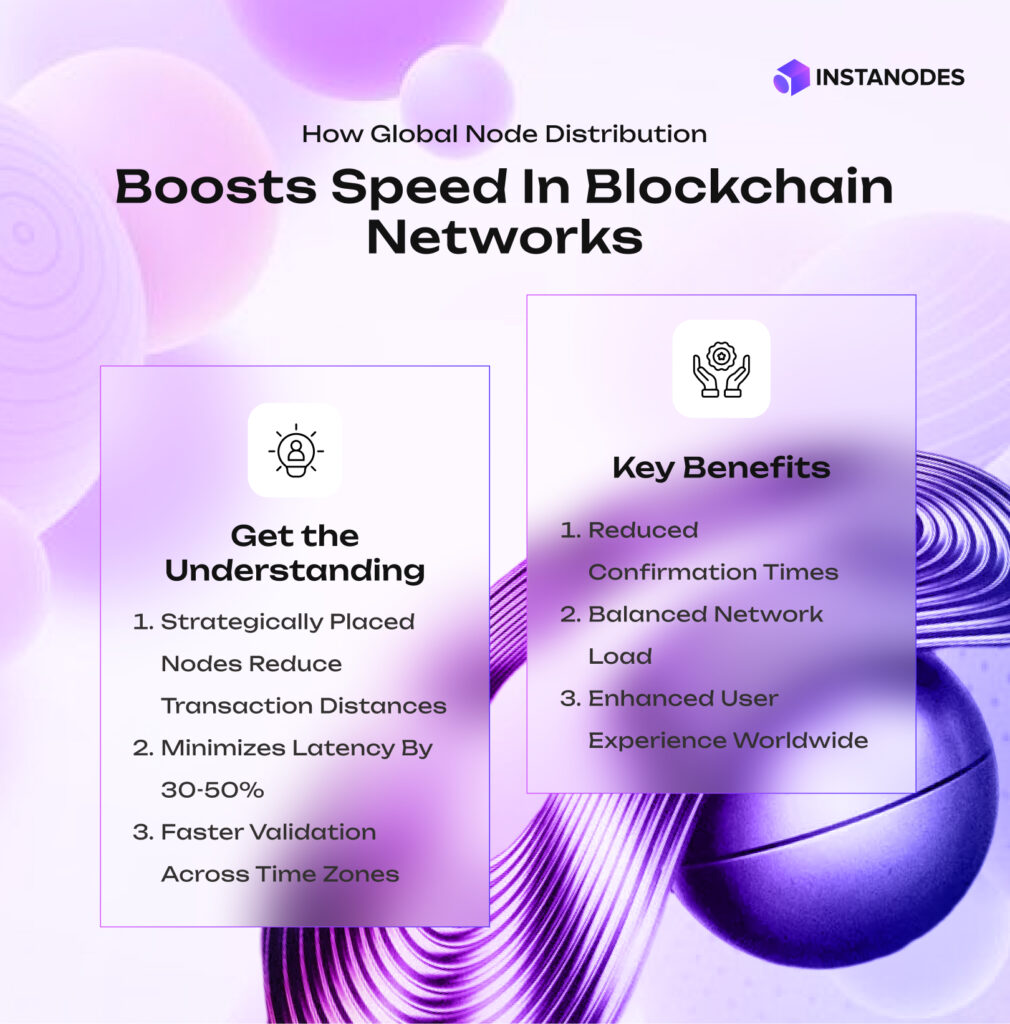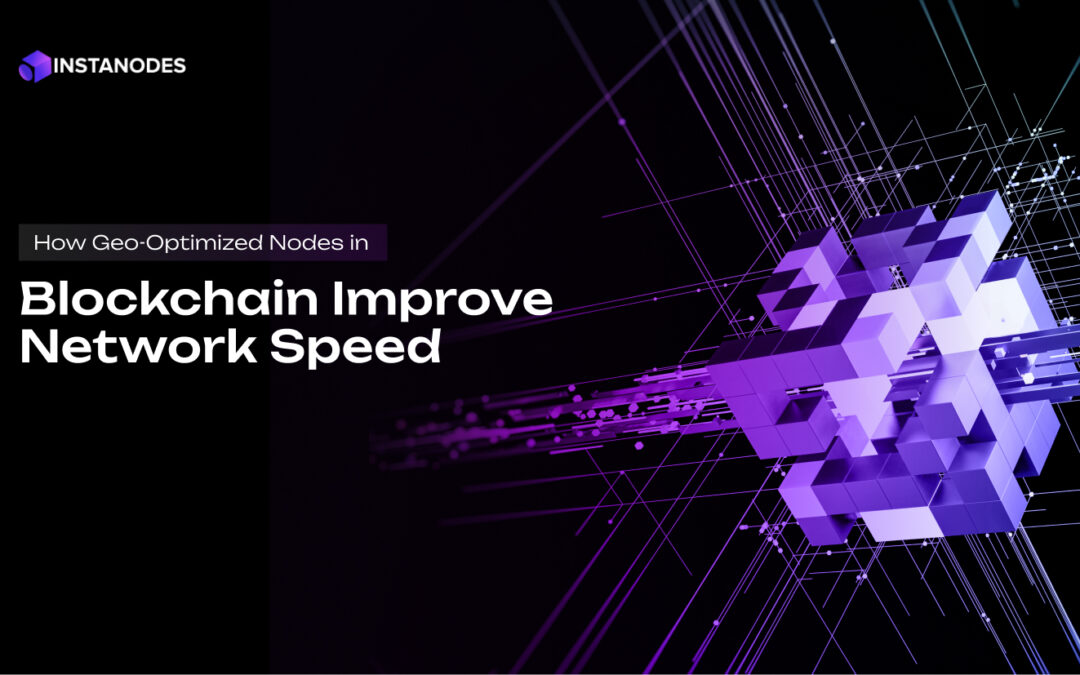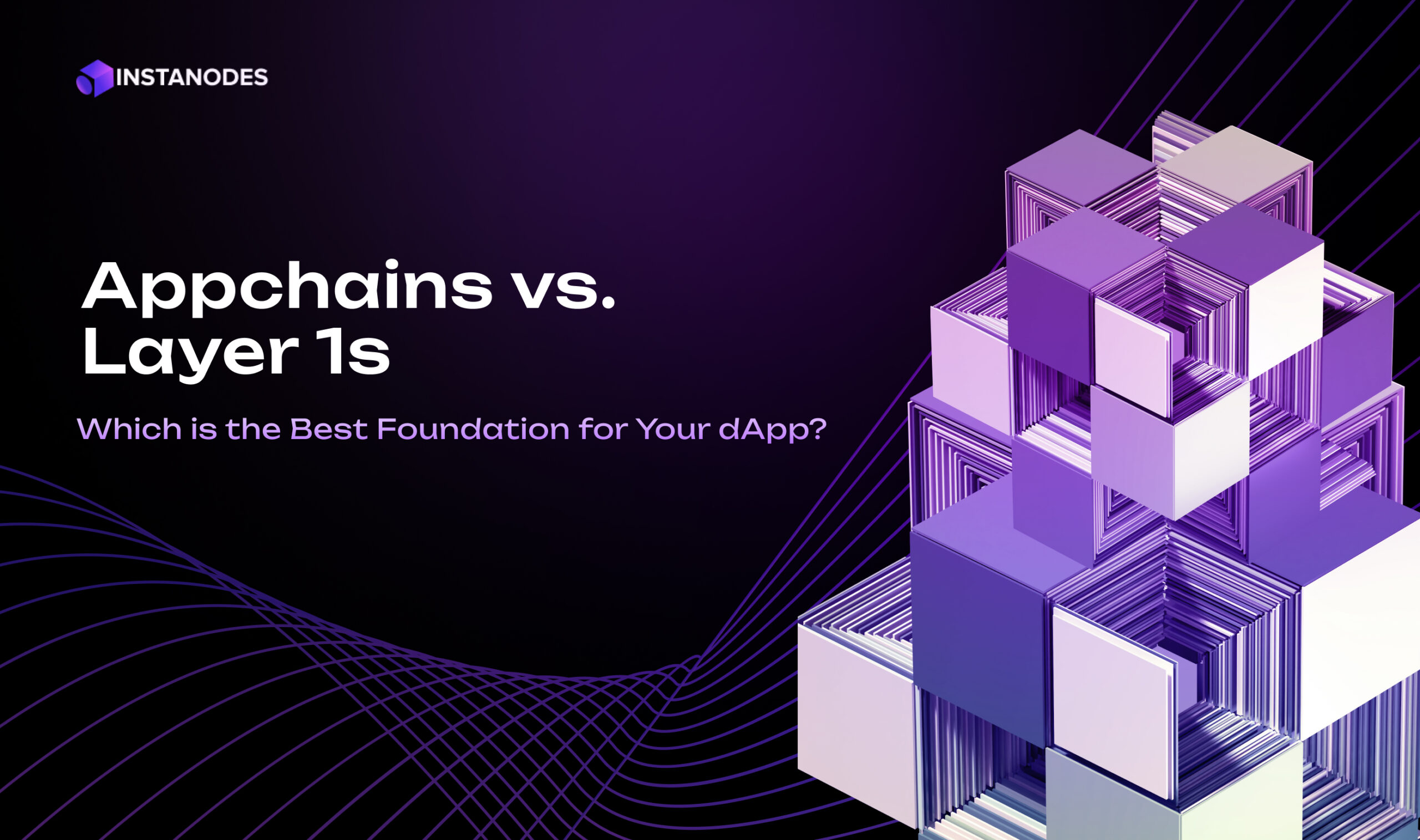Blockchain technology continues to advance, and enhancing network efficiency is the highest priority. Why is that? Because efficiency is instrumental in propelling mainstream adoption and long-term sustainability. As much attention is given to consensus algorithms and development frameworks, the geographic distribution of nodes in blockchain is an equally critical but frequently neglected consideration. Placement of nodes in different geographical locations can profoundly affect transaction speed, network resilience, and the overall user experience within global blockchain networks.
Nodes are the computational powerhouses that validate and store blockchain data. Their physical locations have ripple effects across the entire system architecture, having an impact on everything from the time it takes to confirm transactions to regulatory compliance capabilities. As blockchain networks continue to grow beyond their original cryptocurrency uses into enterprise systems, supply chains, healthcare, and financial services, the importance of strategically placed nodes has never been clearer.
As we have discussed the strong relationship between node geography and blockchain performance, we need to understand how Node as a Service (NaaS) handles this aspect by placing the nodes in different regions across the world. Strategic node placement can significantly enhance network speed through reduced latency, load balancing, and optimized topology.
The rise of blockchain Node as a Service platforms makes geo-optimized node deployment accessible to organizations of all sizes without requiring substantial infrastructure investments.
Understanding Nodes in Blockchain
Nodes form the fundamental infrastructure that powers all blockchain networks. These computer systems store, authenticate, and share the data of the blockchain within the network, maintaining integrity and operation at all times. All nodes have a replica of the blockchain ledger, are involved in the consensus mechanism, and exchange messages with other nodes to maintain the network in sync.
Nodes in blockchain systems typically fall into several categories:
- Full nodes: Store the complete blockchain history and validate all transactions.
- Lightweight nodes: Verify transactions without maintaining the entire ledger.
- Mining nodes: Process transactions and create new blocks (in proof-of-work systems).
- Validator nodes: Stake cryptocurrency to participate in transaction validation (in proof-of-stake systems).
The geographic distribution of these nodes directly influences critical performance metrics, including:
- Transaction confirmation speed
- Network latency and throughput
- Data propagation efficiency
- Resilience against regional outages or attacks
As blockchain solutions venture into finance, supply chain, healthcare, and other industries, the strategic location of nodes has gained greater significance for satisfying performance expectations and regulatory needs.
How Strategic Placement of Blockchain Nodes Enhances Network Speed

The physical location of nodes in blockchain affects its efficiency in several significant ways that impact overall network performance:
Minimizing Latency Through Regional Proximity
When strategically placed nodes span various regions, verification of transactions can take place nearer to the users making these transactions. The nearness lessens physical distance data would have to travel, greatly lessening latency, the time interval it takes to start a transaction and receive acknowledgement. This can be done easily by choosing the right blockchain Node as a Service.
For example, a transaction originating in Tokyo will propagate much faster if validated by nodes in East Asia rather than relying on nodes exclusively located in Europe or North America. This regional optimization becomes particularly critical for applications requiring near-instantaneous confirmation, such as decentralized exchanges or payment systems.
Balancing Network Load Across Time Zones
Blockchain usage is generally to show regular usage patterns varying with geo-location and time zone. Networks can provide stable performance regardless of peak hours for any region by distributing nodes pleasantly all across the globe.
A blockchain with nodes predominantly located in North America would experience traffic congestion within US work hours, while a globally distributed node base smooths this traffic over multiple time zones.
This distribution prevents regional bottlenecks and maintains consistent performance around the clock.
Optimizing Network Topology
The connectivity of nodes forms the network topology of how effectively data moves within the blockchain. Optimized placement of nodes in different geographical locations makes more direct links for data transmission, with fewer “hops” for transactions to travel across the network.
This node placement optimization is more and more crucial as the blockchain networks grow to support millions of customers. Careful node placement can decrease propagation times by 30-50% over randomly scattered nodes, leading to much better user experience.
Enhancing Resilience Through Geographic Redundancy
Internet infrastructure reliability varies dramatically across different regions due to factors including:
- Physical infrastructure quality
- Political stability
- Regulatory environment
- Natural disaster vulnerability
Strategic node positioning assists blockchain networks in routing around areas with connectivity problems or infrastructure failures. Redundancy in this manner guarantees the network continues to function despite some geographic locations facing problems, ensuring continuous service to users globally.
Blockchain Node as a Service: A Global Solution for Optimized Performance
The intricacies of maintaining and deploying globally distributed nodes have spawned the proliferation of specialist Node as a Service (NaaS) providers. These services enable users and companies to join blockchain networks without the technical burden of running their own nodes.
The Rise of Node as a Service Solutions
Node as a Service platforms offer pre-configured blockchain nodes that users can use without considering hardware specifications, software setup, or regular maintenance.
These services generally include:
- Pre-configured nodes for multiple blockchain networks
- Automated software updates and security patches
- Technical monitoring and support
- Scalable infrastructure that grows with demand
- Geographic distribution options for performance optimization
For those interested in participating in blockchain networks without spending a substantial cost of infrastructure development can benefit from NaaS providers.
Benefits of Geo-Distributed Node as a Service
When blockchain Node as a Service providers strategically locate their infrastructure in multiple geographical sites, they provide a number of important benefits:
- Improved Global Performance
By confirming transactions nearer their source, geo-distributed NaaS providers are able to minimize confirmation time for users globally. Such enhanced performance is most useful for decentralized applications with worldwide users.
- Enhanced Resilience
Geographically dispersed node networks are more resilient by nature to localized outages, whether the result of infrastructure failure, acts of nature, or regulatory measures. This redundancy guarantees uninterrupted service even in the event of localized disruptions.
- Regulatory Compliance
Jurisdictions differ in the requirements for storing and processing data. Geo-distributed nodes in blockchain can be made to adhere to local regulations, so blockchain applications become legal to run in several countries.
- Balanced Resource Utilization
Regional load balancing avoids any one of the data centers from being bogged down during peak usage, guaranteeing even performance no matter the volume of regional transactions.
- Cost Optimization
Node as a Service providers can position nodes in areas where energy and infrastructure expenditure is lower, offering these savings to customers while ensuring high performance levels.
Implementing Geo-Optimization Strategies
Leading blockchain Node as a Service providers implement several strategies to maximize the benefits of geographical distribution:
- Dynamic node allocation that adjusts geographic coverage based on current network demand
- Intelligent routing systems that direct transactions to the most efficient validation paths
- Cross-regional redundancy to ensure continuity during localized outages
- Performance monitoring to identify and address regional bottlenecks
- Adaptive scaling to accommodate varying transaction volumes across different regions
These capabilities allow NaaS platforms to deliver optimized performance regardless of where their customers or end users are located.
The Future of Geo-Optimized Node Services
As blockchain technology continues to mature, we can look forward to more advanced methods of node placement and management:
- AI-driven optimization that predicts optimal node distribution based on historical usage patterns
- Edge computing integration brings validation capabilities closer to end users
- Hybrid node architectures that combine cloud-based and physical infrastructure
- Energy-aware placement prioritizing regions with renewable energy sources
- Regulatory-responsive distributions that automatically adapt to changing compliance requirements
These developments will make blockchain networks even better performing and accessible, driving wider industry and use case adoption.
Conclusion
The geographical distribution of nodes is no longer a technical detail but a strategic consideration that directly impacts blockchain network performance. As transaction volumes grow and applications demand lower latency, the importance of geo-optimized nodes will only increase.
Looking to maximize blockchain efficiency without the complexity of managing globally distributed infrastructure? You can try Node as a Service solutions provided by Instanodes. We can set up a geo-optimized node network to ensure your blockchain applications deliver consistent, high-performance experiences to users worldwide while reducing operational overhead.
With Instanodes, you get:
- Global Infrastructure: Access to a worldwide network of data centers tailored for blockchain workloads.
- One-Click Deployment: Launch full nodes, validator nodes, or archive nodes with minimal configuration.
- Geo-Aware Optimization: Strategically placed nodes to serve your users wherever they are.
- 24/7 Monitoring: Real-time dashboards and alerts to ensure optimal node performance.
- Multi-Chain Support: Ethereum, Solana, Cosmos, Polygon, and more supported.
- Security & Compliance: Enterprise-grade security practices and optional compliance configurations.
Experience the benefits of geo-optimized nodes for your blockchain projects. Explore how our globally distributed nodes can enhance your network performance and provide the reliability your applications demand. Contact us today!




